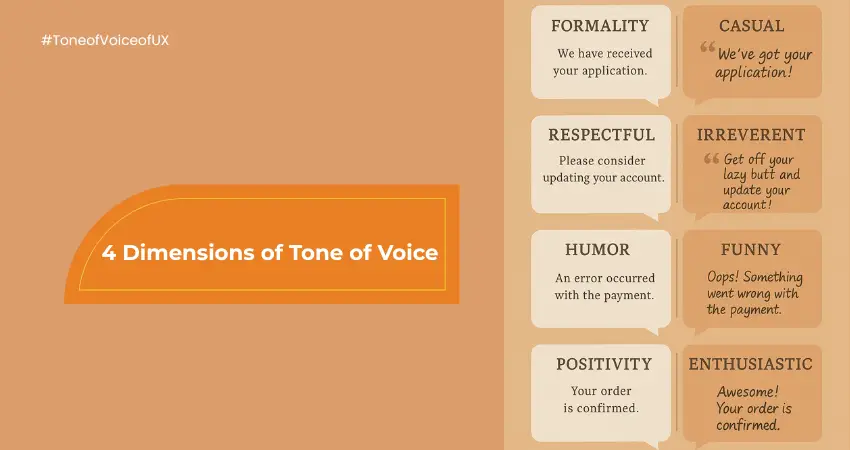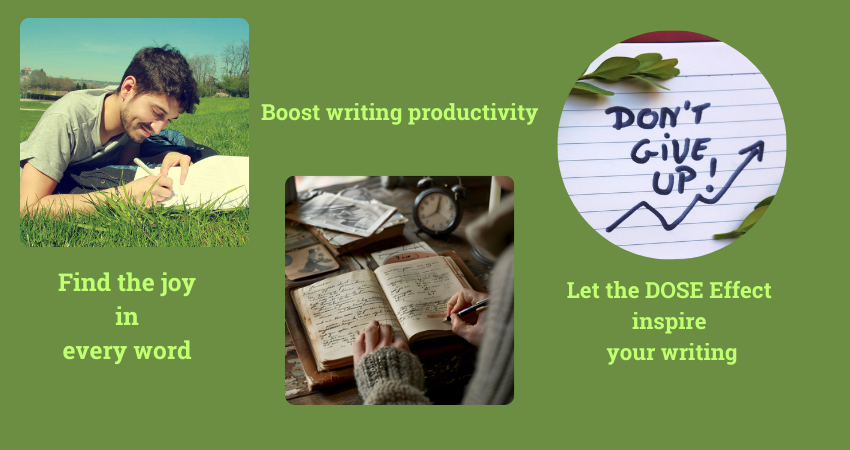10 Blogging Mistakes That Cost You Readers

Blogging can be rewarding—but only if you avoid the traps that stall progress. When I started, I made plenty of mistakes—some minor, others that cost me valuable time, traffic, and confidence. If you’re just starting out or even a few posts in, chances are you’re unknowingly walking into some of these same pitfalls. That’s why I’ve put together this list—not as a critic, but as someone who’s been there, learned the hard way, and wants to help you get it right faster. Let’s uncover the 10 common blogging mistakes you should steer clear of—and what to do instead. 1. Not Having a Niche You can’t be everything to everyone—find your focus. One of the biggest traps bloggers fall into is writing about everything under the sun. When your blog lacks a clear focus, readers don’t know what to expect. Choose a niche you’re knowledgeable about and passionate about—whether it’s tech, wellness, parenting, or productivity. This helps you attract a loyal audience and strengthens your authority. 2. Ignoring What Your Audience Wants Your blog should serve your readers, not just your creativity. Blogging for yourself may feel liberating, but your readers are here to find value. Do some research. What questions are they asking on forums? Which of your posts perform best? Use tools like Google Trends, AnswerThePublic, or social media polls to find out what your audience truly wants—and write with that in mind. 3. Neglecting SEO Best Practices Great content means nothing if no one finds it. There are many competitors in the market. Readers generally go through the first two or three pages of the search engine results. Put effort in finding which topics are in demand. Your blog should load fast. For your information site loading speed is a major factor in determining the rankings of the site. Include the focus keyword in the URL, title, headings, and sub-headings. The focus keyword should be put in a few places in the blog too. Avoid keyword stuffing as this practice is penalized by search engines. Tools like Yoast SEO and Ubersuggest can help optimize your content without overwhelming you. 4. Using Uninspiring Titles Most people judge a book by its cover. A boring or unclear title will not encourage readers to read the blogs. The title should be catchy and encourage readers to want to read the blog. Use numbers or intriguing questions to capture attention. First impression counts. For example Your blog title is the first (and sometimes only) chance to hook your reader. Use numbers, power words, or curiosity-driven phrases. Instead of “How to Blog Better,” try “10 Blogging Mistakes That Cost You Readers” or “How I Fixed My Blog After Months of Zero Growth.” 5. Writing Very Long Blogs Get to the point—your readers are busy. Most readers do not have patience to read long blogs. So cut down on the fluff. Make sure you include the most relevant and important information. If you have more to say, break it into a series. Tip: Add relevant images and infographics if possible 6. Ignoring the Mobile Audience Most of your audience reads on the go—design for it. Most people browse blogs through their respective mobiles. Your blog should be optimized such that text and images load fast on mobiles. The blog should be easy to read as well as navigate. This will ensure a sizable and loyal audience. Then you are on your way to having a successful blog. 7. Not Updating Old Content Do not keep on churning blogs. Periodically go through the older blogs and see if it is still up to date. Put efforts to make sure the blogs include current developments. Update relevant information and consider internal linking to the other blogs on your website. 8. Blogging Without a Schedule Consistency builds trust—sporadic posting breaks it. Do not post blogs whenever you feel like. Blog posting should be regular and consistent. To help yourself keep a content posting calendar. Have a list of topics to write on ready for a month or a whole year. Some readers will be looking forward to read your blogs. Posting consistently will keep them happy and loyal. 9. Expecting Quick Results Success takes time—stay in the game. You are not the only blogger in the market. Making a name in any field takes time. Rome was not built overnight. Perseverance is key to the success of your blogging efforts. Monetization of your blog also takes some time. 10. Copying Other Bloggers’ Style Readers crave authenticity, not replicas. The audience do not want to read what is already there in other blogs. Try to give unique content or a fresh perspective. Be inspired by other blogs but have an original style. Share your personal experiences or honest opinions to make your blog useful as well as attractive. Bonus Mistakes to Watch Out For Skipping proofreading and publishing with typos Choosing a confusing or unappealing domain name Using poor-quality hosting that slows your site Not promoting your blog on social media Ignoring reader comments or feedback Final Thoughts Every blogger stumbles. What matters is that you learn, adapt, and keep writing. Avoiding these mistakes won’t just help your blog grow—it will help you grow as a writer and creator. What was the biggest blogging mistake you’ve made? Share it in the comments—it might save someone else the trouble.
How to Write Engaging Blogs in 2025

Engaging blogs are written for different purposes. Some write it to share knowledge. Others to make money or to pour out their thoughts. But all blogs are not equal. Some are popular while many are ignored. We look at how to write engaging blogs this year. Title Matters The first thing is to have an interesting or catchy title. For your information, people are looking for different things. Some are looking for knowledge. Certain folk want to do research for a purchasing decision. Some want to find out the best product/service which they will eventually acquire. Put yourself in the reader’s shoes and brainstorm what they need as well as want. This will shorten the timespan to choose the right title and the appropriate content for it. Have Striking Images Including images makes a blog look good and easy to read. You can source your images from free sites. If you can afford it, go for paid sites. In general, paid sites have a wider variety of images and have better quality images than free sites. Do not make the mistake of selecting the first image you come across. Allocate time to go through and shortlist the appropriate and best image for your blog. Optimize the Blog for Higher Search Engine Rankings One important factor is fast loading of the blog. Readers will not wait to read blogs that take too much time to load. Make sure that your blog is responsive. To put it simply the blog should look good as well as easy to read across multiple devices. Today most people use their respective smartphones to do various activities including reading blogs. Avoid keyword stuffing. The blog should have a title that is high in demand. The focus keyword should be included in the title, sub-headings, a few times within the blog as well as in the meta description. Use a quality hosting platform for your website. The reason being your blog will load faster and there will be minimal downtime. Other advantages of using a quality hosting platform are stellar customer support and ease of publishing the blog. Also, you can edit the blog conveniently with little or no technical knowledge. Ease of Readability Do not use bombastic language and obscure words. Use simple words known to most readers. Offer translation to cater to readers familiar with languages other than the one the blog is written in. Have relevant sub-headings for paragraphs that readers can scan and decide whether to read that particular paragraph or not. Use short as well as simple sentences. It is a good practice to use active voice instead of passive voice in the blog. Each paragraph should be short and not too big. Organizing the content will surely help readability and scale up popularity. Edit Well Use tools such as Grammarly to spot and rectify spelling mistakes, grammatical errors as well as incorrect punctuation. It is a good practice to proofread the blog at least twice to make sure the blog quality is satisfactory. Have a fresh pair of eyes to examine the content. This is because another person will have a different perspective and catch errors you have missed or overlooked. Have both Internal Links and External Links Include a few internal links in the blog. The links could offer additional information or in-depth explanations. Do not have too many links as this will make the blog look cluttered and confuse the reader. Include a few external links to authoritative sites. This will boost credibility as well as ramp up search engine rankings for the blog. A Final Note Make sure your blog delivers real value, is easy to read, and visually appealing. Once it’s live, promote it across platforms, respond to comments, and give credit where it’s due. Consistency, quality, and engagement are what turn a casual reader into a loyal follower. Need help? We are there—whether it’s refining your content, optimizing for SEO, or brainstorming ideas. Start writing with purpose, publish with confidence, and watch your blog grow in 2025.
Understanding Tone of Voice in UX Writing: The 4 Dimensions Every Writer Needs to Master

Tone of voice in UX writing is more than just personality—it’s a powerful UX design principle that influences user trust, clarity, and connection. And in an online environment where users are constantly scanning and judging with limited attention spans, tone becomes the invisible bridge between design and human experience. Whether you’re writing a 404 error message, onboarding flow, or chatbot script, your tone of voice determines how the message lands—emotionally and cognitively. This article breaks down the four essential tone of voice dimensions—developed through usability research—and shows how content writers and UX professionals can use them to craft accessible, consistent, and compelling microcopy. Why Tone of Voice in UX Writing Isn’t Optional Anymore Tone of voice is often dismissed as something you sprinkle at the end of the content process. That’s a mistake. Here’s why it deserves a front-row seat in every UX writing strategy: It builds trust. A consistent and relatable tone builds credibility and emotional comfort. It reduces cognitive load. Familiar and human-centred language is easier to process, especially in high-stress moments like error handling or payments. It reflects brand integrity. Your product’s tone should echo your values. If you’re a brand that promotes simplicity and empowerment, your copy should too. It shapes user behavior. Tone can nudge users toward taking action or provide the reassurance they need to continue a task. Tone isn’t an overlay—it’s part of the UX architecture. The 4 Dimensions of Tone of Voice (and How to Use Them) The tone of your writing can be broken down into four sliders or spectrums. These allow teams to visualise, define, and apply voice in a more systemised way. 1. Formal vs Casual Formality sets the tone for how professional or conversational your writing feels. A formal tone is structured, respectful, and restrained. It minimises contractions and slang and is best suited for sensitive, legal, financial, or high-stakes content. A casual tone mirrors everyday speech. It uses contractions and informal phrases. This style humanises the interface and makes it approachable. Deeper Insight: A formal tone may signal authority but can also create distance. A casual tone feels warm but may lose precision. Balance based on the user journey stage. Tip for writers: If you’re writing across multiple touchpoints (e.g., FAQs, landing pages, chat support), define a tone range rather than a single point. Formal: “Your credentials have been verified.” Casual: “All set! You’re good to go.” 2. Funny vs Serious Humour in UX writing is powerful—but it’s not always welcome. A humorous tone introduces playfulness and charm. It’s ideal for light-hearted products, creative industries, or gamified user experiences. A serious tone is neutral, direct, and no-nonsense. It’s crucial during tasks that involve user stress, confusion, or critical data. Deeper Insight: Humour is cultural, contextual, and highly subjective. What works in a Gen Z fintech app may fall flat in an enterprise SaaS dashboard. Tip for writers: Always user-test humour. One misplaced joke can erode brand trust more than a typo. Funny: “Oops! We messed up. We’re fixing it faster than you can say ‘debug’.” Serious: “An unexpected error occurred. Please try again.” 3. Respectful vs Irreverent This dimension speaks to how seriously the brand takes the user’s emotions, expectations, and boundaries. A respectful tone communicates empathy, support, and user-centric thinking. It avoids assumptions, sarcasm, and flippant responses. An irreverent tone is bold, edgy, and sometimes provocative. It deliberately challenges norms to stand out and appeal to a specific, loyal user base. Deeper Insight: This spectrum often aligns with your brand’s broader values. Are you inclusive and careful, or do you want to push boundaries and be noticed? Tip for writers: Irreverence is not the absence of respect—it’s a calculated tone strategy. If you’re targeting niche audiences, irreverence can be magnetic. Respectful: “Would you like to turn on reminders?” Irreverent: “Want us to nag you with helpful reminders? You know you love it.” 4. Enthusiastic vs Matter-of-Fact This spectrum deals with energy—how much enthusiasm or emotional weight your writing carries. Enthusiastic writing radiates positivity and excitement. Use it for moments of achievement, onboarding, or promotions. A matter-of-fact tone is neutral and direct. It’s suitable for documentation, transactions, and backend processes. Deeper Insight: High enthusiasm during error messages can feel tone-deaf. Similarly, a flat tone during user success moments may undercut momentum. Tip for writers: Treat tone like a thermostat. Dial it up during emotionally positive touchpoints; lower it during serious or instructional content. Enthusiastic: “Hooray! You’ve unlocked your next milestone!” Neutral: “Your progress has been updated.” How to Build a Scalable Tone of Voice Strategy Too often, tone is inconsistent because teams write in silos. Here’s how to build a shared framework: Create a Tone of Voice Grid Plot your product’s default tone across the four dimensions. Use examples of what to say and what not to say to build clarity. Map Tone to Journey Stages Define how tone shifts across onboarding, support, transactions, empty states, and celebrations. For example: Onboarding = Casual + Enthusiastic Error message = Formal + Serious CTA = Casual + Confident Use Voice Principles to Train Teams Go beyond do’s and don’ts. Create a tone principle like “We speak like a friendly expert—approachable but precise.” Let this drive how content is shaped. Test, Analyse, Iterate Use tone testing frameworks like pairwise tone comparison, heatmaps, and task completion rates. UX writing is UX. Track how tone affects performance metrics. To Sum Up Tone of voice in UX writing is not the finishing touch—it’s part of the interface. It guides, reassures, persuades, and sometimes even entertains. By understanding and applying the four tone dimensions—formality, humour, respectfulness, and enthusiasm—you build more human-centred, credible, and persuasive experiences. In an era where users are bombarded by apps, notifications, and messages, tone becomes your differentiator.
How to Write Blogs That Actually Get Read

Blog writing today is no longer just a creative hobby — it’s a powerful skill that can build authority, drive traffic, and create real impact. Yet, with millions of new posts published daily, most blogs barely survive the scroll. If you’ve struggled to get eyes on your work, you’re not alone. But here’s the truth: mastering blog writing is not about writing more, it’s about writing smarter, deeper, and with more empathy for your reader. In this blueprint, you’ll learn the proven strategies that turn ordinary blog writing into unforgettable experiences readers want to share. Why Most Blogs Get Ignored (and How to Avoid It) With so much content competing for attention online, average blog writing struggles to stand out. Readers are craving: Genuine answers to their problems Clear action steps they can apply immediately A relatable, human voice behind the content If your blog writing doesn’t offer connection, depth, or relevance, it gets lost — no matter how well-formatted it looks. That’s why aligning your blog writing with experience, expertise, authority, and trust (EEAT) is now non-negotiable. In this article we cover 7 important points that will help you improve your blogging skills. Lets jump right in. 1. Know Exactly Who You Are Talking To Effective blog writing starts with intimacy — knowing exactly who you’re serving. Before writing, ask these questions: Who is my ideal reader? What are they worried about today? How can my blog writing genuinely help them?Successful blogs feel personal, not generic. They read like a letter from a mentor or a friend. Pro Tip: Create a simple persona. Imagine one real person reading your blog writing and focus only on solving their immediate problems. 2. Create Magnetic Headlines That Spark Curiosity Even the best blog writing can fail if your headline doesn’t stop the scroll. Your headline acts as the first handshake with your reader — it must create immediate interest, convey a clear benefit, and compel them to click. Winning headline techniques: Solve a clear pain point (“How to Improve Your Blog Writing Fast”) by offering an obvious benefit or shortcut. Create a curiosity gap (“You Won’t Believe How Easy Blog Writing Can Be”) by sparking intrigue without revealing everything upfront. Promise transformation (“From Invisible to Unstoppable: Blog Writing Mastery”) by showcasing the shift the reader can expect after reading your blog. Think of your headline as a promise you’re making. A strong headline sets accurate expectations for the value the reader will receive, while a weak one leads to disappointment and high bounce rates. SEO Tip: Place the term “blog writing” naturally within your headline to boost keyword relevance — but always prioritize clarity and emotional pull over robotic phrasing. 3. Write an Opening That Pulls Them In Instantly Your blog’s opening lines are critical because they decide whether the reader stays or clicks away. Strong blog writing hooks the audience emotionally, promises value, and makes them curious to continue. Weak openings cause readers to lose interest within seconds, no matter how valuable the rest of the content is. Effective blog writing opening sentence can: Ask a direct and compelling question Paint a vivid struggle the reader instantly recognizes Share a bold, unexpected fact or statistic Example: “Struggling to get your blog noticed? It’s not about luck — it’s about sharpening your blog writing craft in ways few bloggers talk about.” Remember: the goal is to make the reader feel understood — and hungry to read more. 4. Deliver Deep, Actionable Value (Not Just Surface Advice) Google’s AI search updates now reward blogs that demonstrate real experience. Shallow, generic blog writing gets buried quickly because it adds no new value to the reader’s journey. To build trust and genuine engagement through blog writing: Share real-world examples or personal anecdotes that show you have walked the path. Give practical, step-by-step actions that readers can immediately apply. Offer original frameworks or methods you’ve developed or successfully used yourself. EEAT Tip: Readers trust blog writing that is experience-backed and detail-oriented rather than generic. Example: Instead of vaguely advising, “write engaging introductions,” break down the actual process of how to craft an irresistible opening — starting with a hook, a problem statement, and a compelling reason to keep reading. 5. Structure Your Blog for Addictive Reading No one wants to read walls of text anymore. Successful blog writing today must deliver information in a visually appealing, digestible way that aligns with how readers scan content on mobile devices. When structuring your blog writing: Break long blocks of text into short, focused paragraphs (2–3 sentences each). Use clear, descriptive H2 and H3 headings to create natural stopping points and guide the reader’s eye. Introduce bullet points and numbered lists to simplify complex information. Include images, pull quotes, and generous white space to give the eyes breathing room. A clean structure doesn’t just improve readability; it keeps readers engaged longer, boosts SEO performance, and makes your blog writing more memorable. SEO Bonus: Use variations like “improve your blog writing” or “successful blog writing” in your subheadings to enhance topical relevance without sounding repetitive. 6. Build Instant Trust Through Authenticity Real blog writing builds genuine relationships between writer and reader. Readers today have finely tuned sensors for detecting insincerity, and polished corporate fluff no longer builds loyalty. To cultivate authentic trust through your blog writing: Be honest and transparent, even when admitting challenges or failures. Link to credible sources, reputable studies, and respected experts to strengthen your points. Maintain a conversational, empathetic tone that respects the reader’s intelligence and feelings.Authenticity isn’t about being perfect — it’s about being real, relatable, and reader-focused. Authority Tip: Interlink your blog writing across related posts to build a seamless, value-driven reader journey. Creating interconnected content strengthens your site’s topical authority signals and shows Google you are a credible expert in your niche. 7. End With a Clear, Motivating Call-to-Action (CTA) A strong blog writing strategy doesn’t just end with valuable information; it closes with
How I Trained Myself to Write Daily (and Actually Enjoy It)

You’ll notice the title sounds quite impressive (at least, I hope it does!). But the great thing is that anyone can achieve this — and it’s not as daunting as it sounds. All these outcomes came from doing small, consistent actions every day over a long period. Cultivating a writing habit does not need perfect conditions. Actually, it begins with a tiny action of writing every day. Whatever I have achieved today is the outcome of the small but smart and regular actions that I have taken over a long period of time. I strongly believe that tiny habits have a way of evolving into life-changing patterns and writing is no different. Here are the four core principles I used to build lasting habits. Every time I wanted to improve, these four approaches worked without fail. Let’s go straight into the topic. 1. Start Small: Write for Just a Few Minutes a Day When I first focused on building my writing habits, the biggest mistake I made was to ask myself too much. I aimed too high out of excitement – I went from barely journaling once a month to setting goals like “ writing a full short story every week.” The gap between where I was and where I wanted to be was too wide. And I failed after a week. And each failure made it harder to even try the next day. As James Clear explains in Atomic Habits, habits are fundamentally about routines. He further goes on to explain that routines thrive when you focus on small wins and visible progress. And these routines build habits. The breakthrough came when I discovered the idea of starting tiny. Instead of expecting a polished blog post daily, I committed to writing just one small sentence a day. Quality over Quantity. Even one rough sentence counted as a win. This tiny commitment removed excuses. Once writing one sentence became second nature, I naturally started writing two…then a paragraph…then a page. Over time, these small, manageable actions built momentum without feeling overwhelming. Example: My Journey Daily Writing Habit: One sentence every evening before bed. Result: In the first year, I wrote three times more articles and finally completed a novella draft. Bonus: Writing became a stress-free, joyful part of my daily routine — not a chore. 2. Focus on One Habit at a Time One of the biggest challenges in habit-building is trying to change everything all at once. I wanted to improve my writing skills, exercise daily, meditate, and cook homemade meals; and all in the same month! Naturally, I failed at all of them. Here’s what I decided to do: I started focusing on one key habit; writing daily. Until that habit felt automatic — something I no longer had to push myself into — I didn’t add anything else. This made building the habit easier and the success, sustainable. When you give your full attention to just one habit, it grows stronger, faster. 3. Remove Barriers: Make Writing Easy and Accessible We tend to underestimate how small friction points can derail habits. Even something as simple as not knowing what to write about can become a roadblock. I made it easier by: Keeping a journal and pen on my bedside table Keeping a book with writing prompts bookmarked Pre-deciding when and where I would write (e.g., “After dinner, at my desk”) By eliminating decisions and setup effort, writing became almost automatic. If you reduce the number of choices and hurdles, showing up becomes the default. Tip: Create a writing space that feels welcoming. It doesn’t have to be fancy. Even a cleared-off corner with a cup of tea can signal “It’s time to write.” 4. Celebrate Small Wins Initially, finishing a paragraph felt underwhelming — “Is this even progress?” I thought. But learning to celebrate small victories made all the difference. Each finished page, each day I kept the streak alive, each story idea scribbled down; these were all wins worth noticing. Celebrating tiny milestones fuels your motivation. It builds confidence and reinforces the identity of “I’m someone who writes daily.” A small ritual, like ticking a calendar or giving yourself 5 minutes of guilt-free Instagram scrolling after writing, can anchor your brain to that success. To Sum UP The real secret to building a writing habit? Small steps, taken daily, with patience and celebration. If you show up consistently, even in the tiniest way, the results compound beautifully. By the end of the year, you won’t just be someone who “wants to write more” —you’ll be a writer.
The Difference Between Some Time, Sometime, and At Times

Understanding the difference between some time, sometime, and at times is key for writers. This article breaks it down with examples to help you use them correctly.
The DOSE Effect: Boost Writing Productivity with Science-Backed Habits

Boost writing productivity with the DOSE Effect, a science-backed strategy that uses Dopamine, Oxytocin, Serotonin, and Endorphins to transform your writing habits into a fulfilling and rewarding experience.
Timeless Writing Advice from C.S. Lewis That Still Inspires Today

Great writing isn’t just about stringing words together—it’s about clarity, rhythm, and authenticity. Decades ago, C.S. Lewis shared simple yet profound advice that still resonates today. From silencing distractions to writing with passion and precision, his words serve as a timeless guide for anyone looking to sharpen their craft. Whether you’re drafting your next LinkedIn post or penning your first book, Lewis’s wisdom reminds us that writing well is an art—and it all starts with the fundamentals.
The 5 A’s of Content Writing

Ever wondered what makes some content stick in your mind while others just fade away? The answer lies in mastering a few key principles. Whether it’s a blog post, a social media caption, or even a product description, the 5 A’s of content writing – Audience, Authenticity, Accuracy, Attractiveness, and Actionability – can help you create content that resonates and makes an impact. Let’s dive into each one and see how these simple ideas can transform your writing. 1. Audience Before you even think about typing a word, ask yourself: Who am I talking to? Understanding your audience is the foundation of great content. Think about what they care about, what they’re struggling with, and what kind of tone would make them feel seen. For example, if you’re writing for young parents looking for baby gear, they’ll appreciate a friendly, empathetic tone. On the other hand, business owners reading about cybersecurity might prefer a more straightforward, knowledgeable voice. It’s all about speaking their language. Quick Tip: Picture one person in your audience and write as if you’re speaking directly to them. It’ll make your content feel more personal and relatable. 2. Authenticity Let’s be honest – nobody enjoys content that feels fake or overly polished. People crave authenticity. They want to feel like they’re hearing from a real person, not a faceless brand. Being authentic doesn’t mean oversharing or being unprofessional. It simply means staying true to your voice and values. Share your perspective, admit what you don’t know, and don’t be afraid to sound human. Readers will appreciate the honesty. Quick Tip: Write the way you talk. It’s okay if it’s a little informal – that’s what makes it real. Just make sure it still fits your audience’s expectations. 3. Accuracy Nothing ruins trust faster than inaccurate information. If you’re making claims, back them up. If you’re using stats, double-check your sources. Accuracy shows that you respect your audience’s time and intelligence. For example, if you’re writing about health tips or tech solutions, always link to reputable sources or explain where your data comes from. It’s not just about being right; it’s about showing your readers they can rely on you. Quick Tip: When in doubt, fact-check. A quick Google search can save you from spreading misinformation and damaging your credibility. 4. Attractiveness Let’s face it – nobody wants to read a wall of text. How your content looks is just as important as what it says. Break it up with short paragraphs, bullet points, and headers. Add a splash of visuals like images or infographics to keep things interesting. Think of it this way: You’re guiding your reader through a journey. Make it enjoyable, not overwhelming. Quick Tip: Before hitting publish, step back and skim your content. Does it look inviting? If not, tweak it until it feels like something you’d want to read. 5. Actionability Every piece of content should leave your reader with something to do. Whether it’s subscribing to your newsletter, downloading a resource, or simply thinking about a topic differently, actionable content makes an impact. A good Call-to-Action (CTA) is clear and to the point. Think phrases like “Try it out today,” “Grab your free guide,” or “Join the conversation.” Make it easy for your readers to take that next step. Quick Tip: Don’t overcomplicate your CTA. One clear action is better than a laundry list of options. Wrapping It Up Content writing doesn’t have to be complicated. When you focus on the 5 A’s – Audience, Authenticity, Accuracy, Attractiveness, and Actionability – you’re creating content that truly connects with people. Start by understanding who you’re writing for, keep it real and relatable, double-check your facts, make it easy to read, and leave your readers with something to do. These small steps can make a big difference in how your content is received. Your Turn: Ready to try the 5 A’s? Start with your next blog, email, or post and see how these principles can make your content more engaging and impactful!
How Perfectionism in Writing Holds You Back and What to Do About It

Perfectionism in writing can feel like a heavy-weight. On the surface, it might seem like a positive trait—a sign of dedication to your craft. But in reality, it can hold you back. The pursuit of flawless work often leads to endless revisions, self-doubt, and even procrastination. Here’s the truth: no piece of writing will ever be perfect, and that’s okay. Embracing imperfection is what helps you grow as a writer and, ultimately, create your best work. The Struggle with Perfectionism Perfectionism can sneak into your writing life in subtle ways. Maybe you hesitate to start a project because you feel unprepared. Or you might spend hours rewriting a single paragraph, chasing some unattainable ideal. Perfectionism convinces you that your worth as a writer is tied to how flawless your work appears—and that’s simply not true. This mindset creates a vicious cycle. You avoid taking risks for fear of failure, which means you never fully explore your creative potential. It’s like being stuck in a loop of “not good enough,” and it robs you of the joy that comes with simply putting your thoughts into words. How Perfectionism Hinders Progress Procrastination: The fear of falling short of unrealistic expectations can prevent writers from even starting a project. This “paralysis by analysis” keeps ideas trapped in the mind instead of making their way to the page. Overediting: Perfectionists often fall into the trap of endlessly tweaking sentences and paragraphs. What begins as a draft becomes a never-ending cycle of revisions, turning progress into stagnation. Self-Doubt: The constant pursuit of flawlessness amplifies insecurities, making writers question their talent or ability to create something meaningful. Burnout: Striving for perfection drains emotional and mental energy, leaving writers exhausted and uninspired. Over time, this can lead to the dreaded “writer’s block,” where the pressure to perform stifles creativity entirely. 6 Ways to Break Free from Perfectionism The good news is you don’t have to stay stuck. There are practical ways to loosen perfectionism’s grip and rediscover the freedom of writing. Here are some strategies that can help: Focus on Progress, Not Perfection Celebrate small wins. Did you write a paragraph today? Great! Every word you put on the page is progress, and progress is what leads to finished work. See Mistakes as Part of the Process Mistakes aren’t failures; they’re opportunities to learn. Each “flawed” draft is a stepping stone toward something better. Give yourself permission to create messy first drafts. Set Realistic Expectations Forget the idea of perfection. Aim to write something honest, engaging, or thought-provoking. These qualities matter far more to readers than perfection. Adopt a Growth Mindset Writing is a skill you develop over time. Your ability to improve depends on practice, not perfection. The more you write, the better you’ll get. Be Kind to Yourself Treat yourself the way you would a friend. Would you criticize a fellow writer for struggling with a draft? Of course not. Offer yourself the same compassion. Set Deadlines and Move On Deadlines can be your best friend. They force you to finish and let go of a project, even if it feels incomplete. Trust that “good enough” is often exactly what’s needed. Why Imperfection Makes Better Writers Let’s be clear: embracing imperfection doesn’t mean settling for mediocrity. It means giving yourself the freedom to take risks, make mistakes, and grow from them. Some of the most powerful writing comes from moments of vulnerability and authenticity—qualities that can’t shine through if you’re paralyzed by perfectionism. Think of your favorite books. Chances are, they weren’t born perfect. They were revised, reshaped, and polished over time. What makes them resonate is not their perfection, but the humanity in their pages. The same can be true for your work. To Wrap Up Perfectionism in writing might feel like an obstacle, but it doesn’t have to stop you. By focusing on progress and letting go of the need to be flawless, you can reclaim the joy of writing. Every writer—from beginners to seasoned pros—faces moments of doubt. What sets successful writers apart is their ability to keep going. So, give yourself permission to write boldly, make mistakes, and learn along the way. The world doesn’t need perfect writers; it needs real, authentic voices. And yours is one worth sharing. Are you looking for a writer who can transform ideas into impactful content that resonates with your audience? Let’s collaborate to craft authentic stories that drive results. Contact me today to take your content to the next level!
